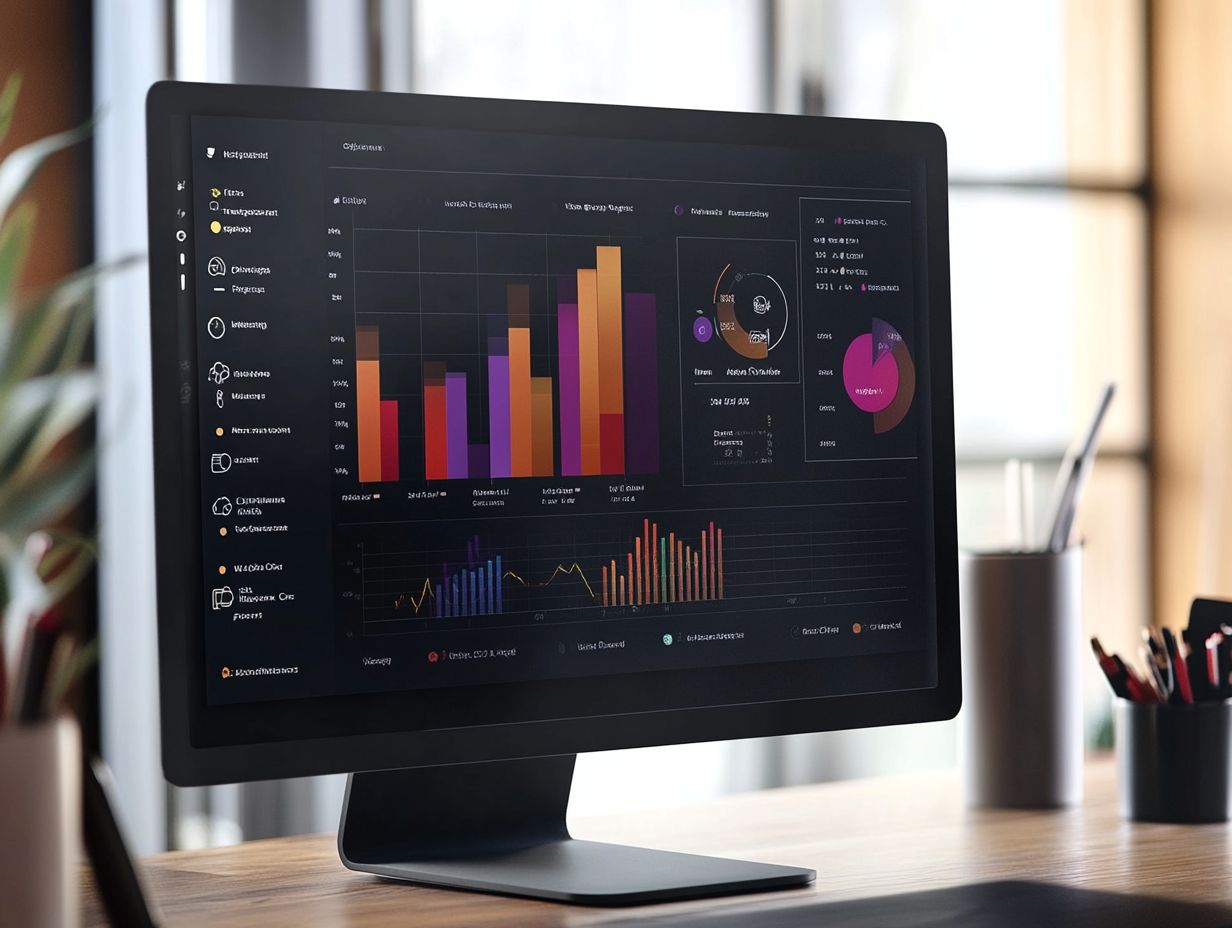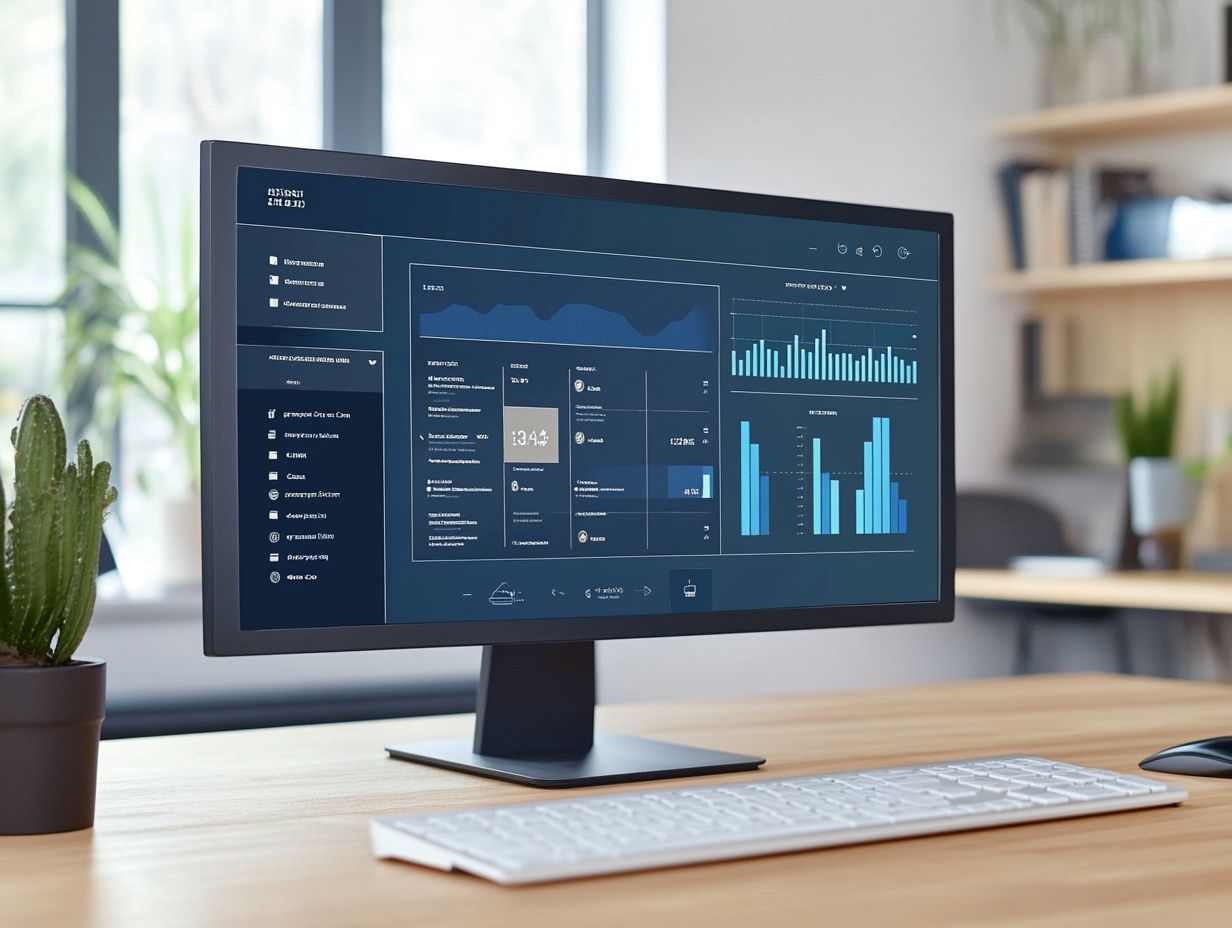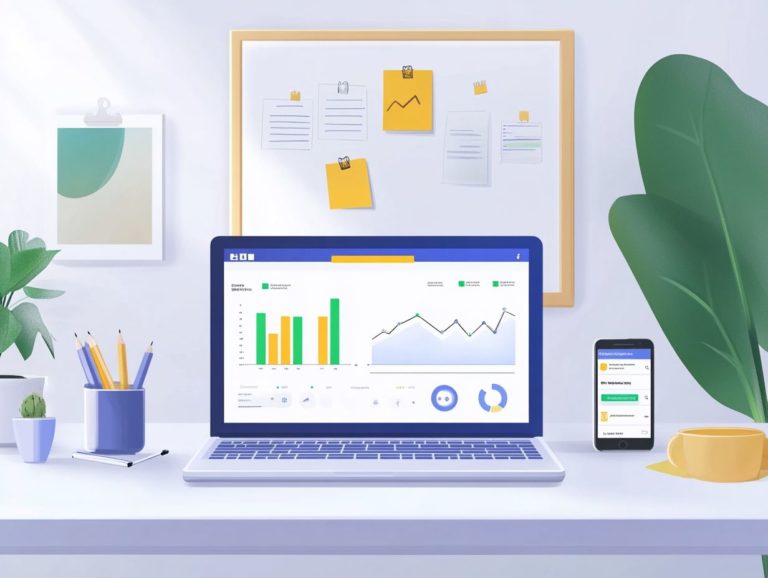Key Metrics for Cloud Cost Management
Cloud Cost Management has emerged as an essential priority for businesses harnessing the power of cloud technology.
As organizations increase their reliance on cloud services, grasping and managing these costs becomes imperative to prevent unwarranted expenditure.
This article delves into the significance of effective Cloud Cost Management, highlighting the benefits it offers and the key metrics necessary for monitoring expenses.
It also provides best practices and insightful tips for optimizing resource utilization while steering clear of common missteps.
Explore the insights within to discover how to maximize your cloud investment with efficiency and precision.
Contents
- Key Takeaways:
- Why is Cloud Cost Management Important?
- Key Metrics for Cloud Cost Management
- Best Practices for Cloud Cost Management
- Frequently Asked Questions
- 1. What are key metrics for cloud cost management?
- 2. How do I determine the cost per resource in my cloud service?
- 3. Why is it important to track the total cost of ownership for my cloud services?
- 4. What is the significance of monitoring cost per user for my cloud environment?
- 5. How can I analyze my usage patterns for better cloud cost management?
- 6. What is the best way to manage costs across different cloud regions?
Key Takeaways:

Effective cloud cost management helps businesses reduce expenses, increase efficiency, and improve overall performance.
Key metrics include tracking costs, optimizing resources, and managing services.
To achieve the best results, businesses should review and adjust cloud usage regularly, avoid common mistakes, and utilize cost-saving tools and strategies.
What is Cloud Cost Management?
Cloud Cost Management (CCM), which helps you control your spending on cloud services, is your key to understanding and managing cloud expenditures while ensuring your cloud infrastructure performs at its best.
It s all about evaluating your cloud usage, pinpointing cost drivers, and implementing strategies that enable effective resource allocation across various platforms like Amazon Web Services, Azure, and Google Cloud.
Given the growing complexity of cloud services, you must adopt strong financial management practices now to optimize costs and enhance visibility into your cloud expenditures.
CCM comprises several components, including:
- Cost analysis
- Forecasting
- Budgeting
These components provide deeper insights into your cloud financials. Additionally, it involves utilizing advanced tools and methodologies for monitoring, reporting, and analyzing resource usage in real-time.
You can apply optimization techniques like rightsizing, which means adjusting your cloud resources to better match your needs, auto-scaling, and committing to reserved instances to ensure that you re only paying for what you truly need.
By embracing these strategies, you ll be better equipped to manage your cloud investments, preventing unexpected costs while unlocking greater value from your cloud environments.
Why is Cloud Cost Management Important?
Cloud Cost Management is essential for your organization if you’re utilizing cloud services, especially given the growing intricacies of cloud pricing models and the risk of unforeseen expenses. Understanding the key metrics for measuring cloud security effectiveness can also help mitigate potential risks.
By achieving precise cost visibility, you can evaluate your committed dollar risk and pinpoint potential losses stemming from inefficiencies.
Mastering cloud cost management enhances performance and elevates your net savings rate, giving you the power to reinvest in innovation and drive growth.
Benefits of Effective Cloud Cost Management
Implementing effective Cloud Cost Management strategies brings a wealth of benefits that elevate your financial efficiency and operational agility.
By leveraging FinOps practices, you can optimize your cloud usage and seamlessly align financial management with your technical decision-making.
This approach enhances your ability to track costs and establishes key performance indicators (KPIs) that allow you to measure success and ensure your investments in cloud infrastructure deliver optimal returns.
By adopting these strategies, you can significantly reduce expenses, leading to considerable savings that can be reinvested into innovation or other strategic initiatives.
Imagine a retail firm effectively utilizing targeted cloud resources during peak sales seasons, minimizing over-provisioning and sidestepping unnecessary costs.
Enhanced resource optimization helps you pinpoint unused or underutilized resources, allowing for a more strategic deployment of funds.
Effective cloud cost management also fosters improved collaboration between your IT and finance teams, ensuring both departments operate under a unified strategy.
This alignment of spending with business goals ultimately drives growth across various sectors, paving the way for a more prosperous future.
Key Metrics for Cloud Cost Management

Key metrics are vital for managing cloud costs. They help you track your spending while evaluating cloud performance.
KPIs like net savings rate and cloud usage insights empower you to make informed financial decisions, especially when considering key metrics to evaluate PaaS services.
Regularly assessing these metrics deepens your understanding of cloud costs, which enables you to refine your overall cloud cost management strategies.
Understanding and Tracking Cloud Costs
Tracking your cloud costs is essential for effective management. It gives you clear visibility into your expenditures.
Tools like AWS Cost Explorer provide insights into usage and spending. They help you spot trends and unexpected costs.
By monitoring costs closely, you can adjust resources and optimize performance. This careful approach can unlock big savings!
Use monitoring tools like Azure Cost Management or Google Cloud s Billing Reports. They enhance your understanding of the financial landscape.
Interpreting data is key. For example, identifying services with the highest returns can guide your decisions.
Implement cost optimization strategies like adjusting resource sizes. This ensures you manage costs for better efficiency.
Optimizing Resource Utilization
Optimizing resource use is crucial in cost management. It prevents overspending on underused services.
Examine your usage patterns to reallocate resources and cut waste. This aligns cloud resources with real business needs.
Employ strategies like adjusting resource sizes to fit workloads. Automation can streamline allocation, reducing errors.
Leveraging reserved instances yields significant savings. This allows commitments to specific resources at better rates.
Integrate these practices into your strategy. You ll create a cost-effective environment that adapts to market demands.
Monitoring and Managing Cloud Services
Monitoring cloud services is vital for cost management, especially when considering the future of cloud cost management. It helps you maintain control over your infrastructure.
Strong financial practices enhance visibility into usage. This helps identify areas for improvement.
Regular monitoring ensures effective resource use. It minimizes unnecessary expenses and optimizes service performance.
Analytics tools and dashboards elevate your monitoring. They allow you to visualize spending and resource use in real time.
Regular audits and predictive analytics help anticipate future costs. Adjust your strategies to maintain financial health.
This approach supports accountability across teams. Everyone will understand how their cloud use impacts overall expenses.
Best Practices for Cloud Cost Management

Following best strategies for Cloud Cost Management is essential for maximizing your cloud investment while minimizing expenses, and understanding the key performance indicators for cloud migration can greatly aid in this process.
By embracing effective optimization strategies and managing your cloud budget effectively, you can sync your money and operations, ensuring efficient cloud usage and controlled costs.
These practices enhance financial accountability and foster a culture of cost awareness within your organization, driving a cycle of continuous improvement.
Want to Slash Your Cloud Costs? Start Here!
Reducing cloud costs demands a proactive approach to optimization and financial management, allowing you to achieve significant savings without compromising performance.
By conducting regular audits, leveraging temporary cloud resources that are cheaper, and optimizing storage, you can make substantial reductions in your cloud expenses while still meeting your business needs.
Focusing on your cloud usage and applying efficient resource allocation will help you navigate the complexities of cloud pricing with ease.
To elevate your cost-saving efforts, establish clear budgets and monitor your cloud spending in real-time. Regularly review service contracts and switch to reserved instances for predictable workloads to further contribute to lowering costs.
Encouraging your teams to adopt cloud cost management best practices like shutting down unused resources and right-sizing instances will foster awareness and cultivate a long-term commitment to cost-efficient cloud utilization.
Ultimately, a comprehensive strategy combining financial oversight with technical optimization empowers you to navigate your cloud landscape more economically.
Avoiding Common Mistakes
Avoiding common mistakes in Cloud Cost Management is vital for maintaining cost efficiency and optimal performance. Many businesses stumble into pitfalls like neglecting regular cost audits or failing to track committed dollar risk, leading to significant financial losses over time.
Recognizing these common errors and addressing them can enhance your cloud cost strategies and protect your financial resources. This proactive approach safeguards your budget while cultivating accountability and awareness within your teams.
Another frequent challenge is underutilizing cloud resources; companies often forget to decommission unused instances or overlook monitoring tools that provide real-time insights into resource consumption.
Implementing a rigorous monitoring framework allows you to pinpoint wasteful spending, optimizing your cloud environment effectively. Additionally, incorporating automated budgeting tools helps forecast your spending and enables better resource allocation, ensuring that every dollar invested delivers optimal performance and value.
Frequently Asked Questions
1. What are key metrics for cloud cost management?

The key metrics for cloud cost management include cost per resource, total cost of ownership, cost per user, usage patterns, cost per service, and the benefits of cloud cost management per region.
2. How do I determine the cost per resource in my cloud service?
Cost per resource can be calculated by dividing the total cost of a specific resource (such as storage, compute, or data transfer) by the total usage of that resource over a specific time period.
3. Why is it important to track the total cost of ownership for my cloud services?
Tracking total cost of ownership allows you to understand the overall expenses associated with your cloud services, including hidden costs and potential savings. This helps you make informed decisions about budget allocation and cost optimization.
4. What is the significance of monitoring cost per user for my cloud environment?
Cost per user helps identify which users or departments consume the most resources and incur the highest costs. This can help you optimize usage and control costs by implementing user-specific limits or policies.
Ready to take control of your cloud costs? Start implementing these strategies today!
5. How can I analyze my usage patterns for better cloud cost management?
Track your usage over time to find trends. This shows you which resources you use most and helps you manage costs effectively.
6. What is the best way to manage costs across different cloud regions?
Compare costs across cloud regions with the cost-per-region metric. This helps you spot savings opportunities and optimize resource usage.






